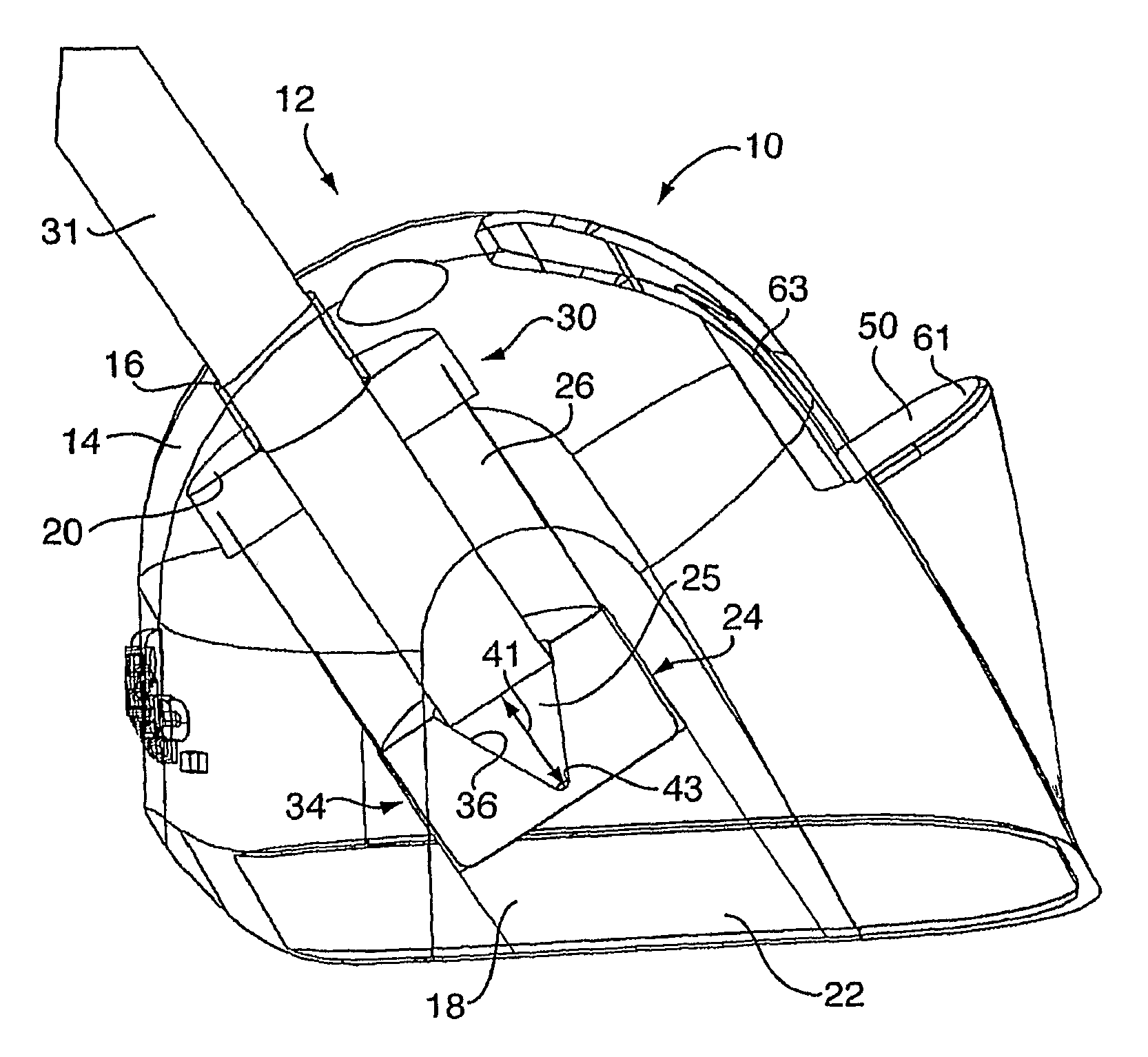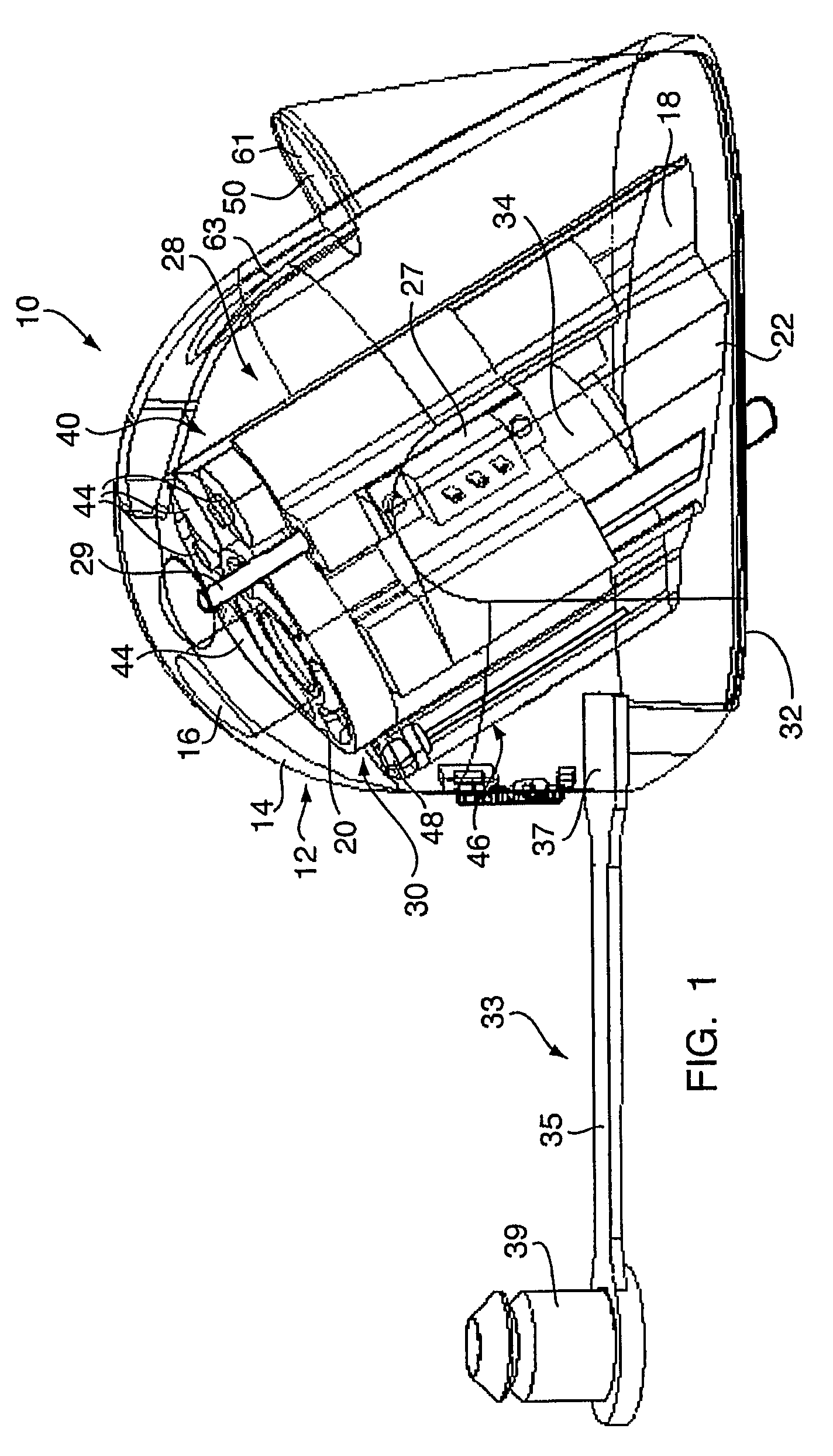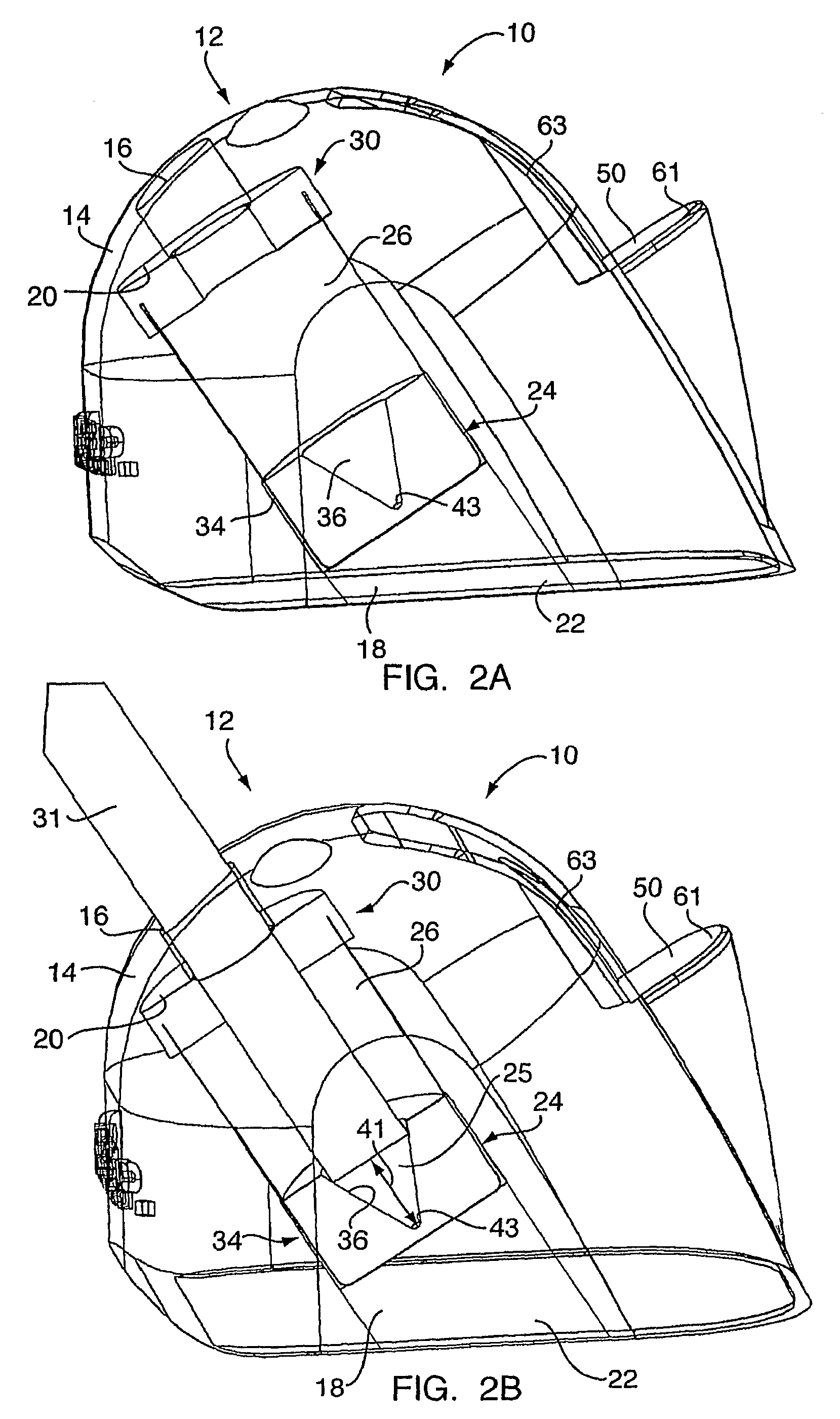Device for white balancing and appying an anti-fog agent to medical videoscopes prior to medical procedures
a technology of white balance and camera system, which is applied in the field of white balance devices for medical videoscopes, can solve the problems of inability of digital cameras to adapt to these changes, inability of most expensive video cameras to automatically do what the eye does, and doctors do not understand the importance, so as to improve visualization and achieve accurate white balance. , the effect of easy to us
- Summary
- Abstract
- Description
- Claims
- Application Information
AI Technical Summary
Benefits of technology
Problems solved by technology
Method used
Image
Examples
Embodiment Construction
[0053]With reference to FIGS. 1 through 3F, a white balance device embodying the present invention is indicated generally by the reference number 10. The device 10 comprises a housing or outer shell 12. The housing 12 has an outer surface 14 defining an opening 16 for inserting therein a medical videoscope such as a laparoscope or endoscope. An interior of the housing 12 defines a canal 18 having a first end 20 communicating with the opening 16 and a second end 22 terminating within the housing 12 for receiving a distal lens of a medical videoscope. A white balancing reference material 24 (see FIGS. 5A through 5C) is disposed within the housing 12 adjacent to the second end 22 of the canal 18.
[0054]The device 10 preferably accommodates a defogging material 26 adjacent to the second end 22 of the canal 18 for treating and preventing the distal lens of a medical videoscope from fogging during a medical procedure. The device 10 preferably further comprises a heating mechanism 28 in the...
PUM
 Login to View More
Login to View More Abstract
Description
Claims
Application Information
 Login to View More
Login to View More - R&D
- Intellectual Property
- Life Sciences
- Materials
- Tech Scout
- Unparalleled Data Quality
- Higher Quality Content
- 60% Fewer Hallucinations
Browse by: Latest US Patents, China's latest patents, Technical Efficacy Thesaurus, Application Domain, Technology Topic, Popular Technical Reports.
© 2025 PatSnap. All rights reserved.Legal|Privacy policy|Modern Slavery Act Transparency Statement|Sitemap|About US| Contact US: help@patsnap.com



